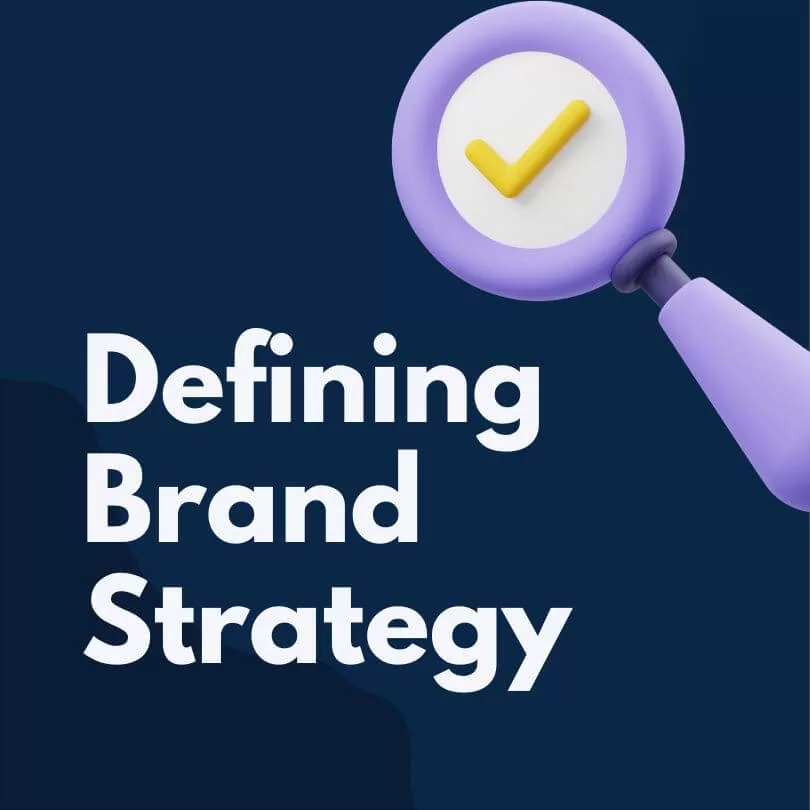In today’s highly competitive business landscape, brand development plays a crucial role in establishing a strong presence and standing out from the crowd. A well-crafted and unique brand can have a significant impact on a company’s success, customer loyalty, and overall growth. In this guide, we will explore the importance of brand development and how to develop a brand that is unique and memorable brand, and the essential elements involved in creating and maintaining a successful brand.
Branding is not a one-time effort; it requires ongoing development and evolution to stay relevant and competitive in a dynamic market. As consumer preferences and trends change, it’s crucial to adapt your brand strategy, messaging, and visuals to meet evolving needs.
Continuously monitor your brand’s performance, gather feedback, and make necessary adjustments to ensure your brand remains compelling and resonates with your target audience.
Importance of Brand Development
Brand development is vital for several reasons. Firstly, it helps differentiate your business from competitors. In a saturated market, a strong brand can be the key factor that sets you apart and attracts customers. Secondly, it builds trust and credibility.
A well-established brand with a positive reputation fosters trust among consumers, making them more likely to choose your products or services over alternatives. Thirdly, brand development creates emotional connections.
By crafting a brand that resonates with your target audience, you can evoke positive emotions and forge lasting relationships with customers. Finally, a strong brand has long-term financial benefits.
It increases brand equity, which can lead to higher perceived value, premium pricing, and greater customer loyalty.
Benefits of a Unique and Memorable Brand


Having a unique and memorable brand brings numerous advantages. Firstly, it helps create brand recognition. When consumers can easily identify and remember your brand, they are more likely to choose it when purchasing.
Secondly, a strong brand facilitates word-of-mouth marketing. Satisfied customers are more likely to recommend your brand to others, helping to expand your customer base organically. Thirdly, a unique brand allows for compelling storytelling.
By having a distinct identity and story, you can engage with customers on a deeper level, creating a sense of loyalty and emotional attachment.
Finally, a memorable brand enhances customer loyalty. When customers have positive experiences and associations with your brand, they are more likely to become repeat customers and brand advocates.
Definition of Branding


Branding encompasses all the activities and strategies undertaken to shape a brand’s identity, perception, and reputation in the market.
It involves defining the brand’s essence, values, and personality and communicating them consistently through various channels. Effective branding creates a unique and memorable brand image in the minds of consumers, distinguishing it from competitors and building long-term relationships.
Understanding the Elements of Branding


Branding is the process of creating and managing a brand’s identity, perception, and reputation in the market. It involves various elements that work together to shape how a brand is perceived by consumers.
These elements include the brand’s visual identity, voice, messaging, values, personality, and more. Effective branding requires a deep understanding of the target audience, market trends, and competitors.
By strategically crafting these elements, businesses can create a cohesive and compelling brand that resonates with their customers. A brand is composed of various interconnected elements. These include:
1. Logo and Visual Identity
The logo is a visual representation of the brand and plays a significant role in creating brand recognition. A well-designed logo should be simple, unique, and reflective of the brand’s values and personality.
Additionally, the visual identity includes other design elements such as color palettes, typography, and imagery that contribute to the overall brand aesthetics.
2. Brand Voice and Messaging
The brand’s voice refers to its distinct tone, style, and language used in communication. It should align with the brand’s personality and resonate with the target audience. Messaging involves crafting compelling and consistent brand messages that convey the brand’s value proposition, benefits, and story.
3. Brand Values and Personality
Brand values represent the principles and beliefs that guide the brand’s actions and decisions. They define what the brand stands for and what it strives to achieve.
Brand personality refers to the human traits and characteristics associated with the brand, which help shape how the brand is perceived.
It includes attributes such as being friendly, innovative, trustworthy, or adventurous, among others. These elements humanize the brand and allow consumers to connect with it on a more personal level.
Conducting Market Research


Before diving into brand development, it’s essential to conduct thorough market research. This step helps gather valuable insights about the target audience, competitors, and current market trends.
By understanding these factors, you can create a brand that effectively appeals to your intended customers and stands out from the competition.
1. Identifying Target Audience and Competitors
Identifying your target audience is crucial for developing a brand that resonates with them. Conduct research to determine your potential customers’ demographic information, preferences, needs, and pain points.
Additionally, analyze your competitors to gain insights into their branding strategies, target audience, and market positioning. This information will help you differentiate your brand and identify opportunities for growth.
2. Analyzing Consumer Preferences and Trends
Understanding consumer preferences and market trends is essential for creating a brand that aligns with current demands. Stay updated on industry developments, consumer behavior, and emerging trends through market research, surveys, social media monitoring, and industry reports. This knowledge will inform your brand development strategy and help you make informed decisions.
Defining Brand Strategy


The brand strategy outlines the long-term plan and goals for developing and positioning your brand in the market. It involves establishing brand positioning, crafting a brand mission statement, setting brand goals and objectives, and defining the target audience.
1. Establishing Brand Positioning
Brand positioning defines how your brand wants to be perceived in the market compared to competitors. Identify your unique value proposition and key differentiators that set you apart. This positioning should resonate with your target audience and align with their needs and desires.
2. Crafting a Brand Mission Statement
A brand mission statement communicates the purpose and core values of your brand. It encapsulates what your brand aims to achieve and the impact it wants to make in the lives of its customers. A compelling mission statement helps build a sense of purpose and guides brand development efforts.
3. Setting Brand Goals and Objectives
Establish specific, measurable, achievable, relevant, and time-bound (SMART) goals for your brand. These goals should align with your overall business objectives and provide a clear direction for brand development. Examples of brand goals include increasing brand awareness, expanding market share, or improving customer loyalty.
Creating a Visual Identity


A strong visual identity creates a recognizable and memorable brand image. It includes the design elements that visually represent your brand, such as the logo, color palette, typography, and imagery.
1. Designing a Logo
The logo is a visual symbol that represents your brand. It should be simple, unique, and reflective of your brand’s personality and values. Work with professional designers to create a logo that captures the essence of your brand and resonates with your target audience.
2. Choosing Brand Colors and Typography
Colors and typography play a significant role in evoking emotions and conveying brand personality. Select a color palette that aligns with your brand’s values and resonates with your target audience. Similarly, choose typography that reflects your brand’s tone and style.
3. Developing Brand Guidelines
Brand guidelines ensure consistency in how your brand is visually represented across different platforms and mediums. These guidelines outline the proper usage of the logo, colors, typography, imagery, and other design elements. Consistency in visual identity strengthens brand recognition and establishes a cohesive brand image.
4. Crafting Brand Messaging
Brand messaging involves creating compelling and consistent messages that convey your brand’s value proposition, benefits, and story. It should align with your brand’s personality, target audience, and overall positioning. Craft clear and concise messaging that resonates with your customers and differentiates your brand from competitors.
5. Creating a Unique Brand Voice
Your brand voice encompasses the tone, style, and language used in communication. It should be consistent across all brand touchpoints, such as website content, social media posts, advertisements, and customer interactions.
Determine the appropriate brand voice based on your target audience and brand personality. Whether it’s professional, friendly, authoritative, or playful, the brand voice should align with your brand identity and resonate with your customers.
6. Crafting a Compelling Brand Story
A brand story is a narrative that communicates the history, values, mission, and unique aspects of your brand. It helps create an emotional connection with your audience and gives them a reason to choose your brand. Craft a compelling brand story that is authentic, relatable, and engaging, highlighting what sets your brand apart and why it matters to your customers.
7. Developing Consistent Messaging Across Platforms
Consistency is key in branding. Ensure that your brand messaging, voice, and story are consistently communicated across all platforms and touchpoints. This includes your website, social media channels, marketing materials, customer service interactions, and any other communication with your audience. Consistent messaging reinforces brand identity and helps build brand recognition and trust.
Building Brand Awareness


Building brand awareness is crucial for gaining visibility and attracting customers. Utilize various strategies to increase your brand’s reach and exposure.
1. Utilizing Content Marketing Strategies
Create valuable and relevant content that aligns with your brand and provides value to your target audience. This can include blog posts, articles, videos, podcasts, infographics, and more. Share this content through your website, social media platforms, email newsletters, and other relevant channels to position your brand as an authority in your industry and engage with your audience.
2. Leveraging Social Media Platforms
Social media platforms offer a powerful means to connect with your target audience and build brand awareness. Identify the platforms most used by your audience and create engaging and shareable content. Interact with your audience, respond to comments and messages, and foster a community around your brand.
3. Collaborating with Influencers and Industry Partners
Partnering with influencers and industry experts who align with your brand can help expand your reach and tap into your existing audience. Collaborate on content creation, sponsored posts, or events to leverage their credibility and reach a wider audience.
4. Engaging with Your Audience
Engagement is crucial for building brand loyalty and fostering a community around your brand. Respond to comments, messages, and reviews promptly and genuinely. Encourage user-generated content, run contests or giveaways, and seek feedback from your audience to create a sense of involvement and connection.
5. Building a Strong Online Presence
Optimize your website for search engines to improve visibility in search results. Use search engine optimization (SEO) techniques to rank higher for relevant keywords. Additionally, leverage online advertising, such as pay-per-click (PPC) campaigns, to increase brand exposure and drive traffic to your website.
6. Implementing Effective Customer Service Practices:
Exceptional customer service is an integral part of brand development. Ensure that your customer service team is knowledgeable, responsive, and provides a positive experience. Address customer concerns promptly and go the extra mile to exceed their expectations. Positive customer experiences contribute to brand loyalty and advocacy.
7. Encouraging User-generated Content and Brand Advocacy
Encourage your customers to share their experiences with your brand through testimonials, reviews, and user-generated content. This social proof builds trust and credibility. Additionally, identify and nurture brand advocates who actively promote your brand and create opportunities for them to share their positive experiences.
Measuring Brand Success


To evaluate the effectiveness of your brand development efforts, it’s essential to measure key performance indicators (KPIs) and track brand metrics and analytics.
1. Setting Key Performance Indicators (KPIs)
Establish KPIs that align with your brand goals and objectives. These may include metrics such as brand awareness, customer engagement, website traffic, social media reach, conversion rates, revenue growth, customer loyalty, or brand sentiment. Choose KPIs that are relevant to your brand and track them consistently.
2. Tracking Brand Metrics and Analytics
Utilize tools like Google Analytics, social media analytics, and customer feedback surveys to track and analyze brand metrics. Monitor website traffic, engagement rates, social media reach, conversion rates, customer satisfaction scores, and brand sentiment. This data provides insights into the effectiveness of your branding efforts and helps identify areas for improvement.
3. Making Adjustments and Improvements Based on Data
Regularly review the data and analytics to identify trends, patterns, and areas where your brand can be optimized. Use the insights gained to make data-driven adjustments and improvements to your brand strategy, messaging, visual identity, and marketing efforts. A continuous improvement approach ensures that your brand stays relevant and resonates with your target audience.
Checkpoints to Start Building a Brand


Now is the time to take action and start building a unique and memorable brand. Investing in brand development is an investment in the long-term success and growth of your business.
By following the steps outlined in this guide and consistently implementing branding strategies, you can create a brand that stands out, connects with your audience, and drives meaningful results. Embrace the power of branding and embark on the journey to build a brand that leaves a lasting impression.
Remember, brand development is not a one-time task but an ongoing process. It requires dedication, consistency, and adaptability to the changing market landscape. As you embark on your brand-building journey, keep the following points in mind
1. Stay true to your brand’s essence
While it’s essential to adapt and evolve, always stay true to your brand’s core values, mission, and personality. Consistency in these fundamental elements will help build trust and loyalty among your audience.
2. Listen to your customers
Actively listen to your customers’ feedback, concerns, and preferences. Their insights can guide your brand development efforts and help you better serve their needs. Incorporate customer feedback into your strategies and iterate based on their expectations.
3. Embrace innovation
As market trends and consumer behaviors evolve, be open to embracing innovation and new technologies. Explore opportunities to integrate digital platforms, AI-powered solutions, and emerging marketing channels into your brand strategy. Innovation can help you stay ahead of the competition and engage with your audience in new and exciting ways.
4. Foster brand advocates
Cultivate a community of loyal customers who become brand advocates. Encourage them to share their positive experiences, refer your brand to others, and engage with your content. Brand advocates can significantly amplify your brand’s reach and influence.
5. Continuously monitor and adopt
Regularly review your brand metrics, market trends, and competitor activities. Stay vigilant and adapt your brand strategy as needed to align with emerging opportunities and challenges. Embrace a growth mindset and be willing to make necessary adjustments to stay relevant and competitive.
6. Seek professional expertise when needed
Building a strong brand can be a complex task. If you need guidance or lack the resources internally, consider seeking professional help from branding experts or marketing agencies. They can provide valuable insights, expertise, and creative solutions to accelerate your brand development process.
7. Stay committed for the long haul
Building a successful brand takes time and perseverance. It’s a journey that requires consistency and dedication. Stay committed to your brand development efforts, and be patient as you build brand awareness, loyalty, and equity over time.
Remember that every interaction, communication, and touchpoint contributes to your brand’s perception, so be intentional in crafting a brand experience that leaves a lasting impression.
Recap of Key Points


- Brand development is essential for differentiation, trust-building, emotional connections, and long-term financial benefits.
- A unique and memorable brand enhances recognition, word-of-mouth marketing, storytelling, and customer loyalty.
- Branding encompasses the visual identity, voice, messaging, values, and personality of a brand.
- Conduct market research to understand the target audience, competitors, and consumer preferences and trends.
- Develop a brand strategy by establishing positioning, crafting a mission statement, setting goals, and defining the target audience.
- Create a visual identity with a well-designed logo, brand colors, typography, and brand guidelines.
- Craft compelling brand messaging and develop a consistent brand voice.
- Build brand awareness through content marketing, social media, Instagram marketing, influencer collaborations, and engaging with your audience.
- Build a strong online presence through influencers like Ian Somerhalder, provide exceptional customer service, and encourage user-generated content and advocacy.
- Measure brand success through KPIs and track brand metrics and analytics.
- Make data-driven adjustments and improvements to optimize your brand over time.
- Importance of Ongoing Brand Development and Evolution.
- Better use of Video leads ideas generated through social media.
Conclusion
Building a unique and memorable brand is a strategic process that requires careful planning, an understanding of your target audience, and consistent execution. A well-developed brand sets you apart from competitors, builds trust and loyalty, and drives business growth.
By defining your brand’s identity, crafting compelling messaging, building brand awareness, and continuously monitoring and improving your brand’s performance, you can create a strong brand that resonates with your audience and sets the foundation for long-term success.











